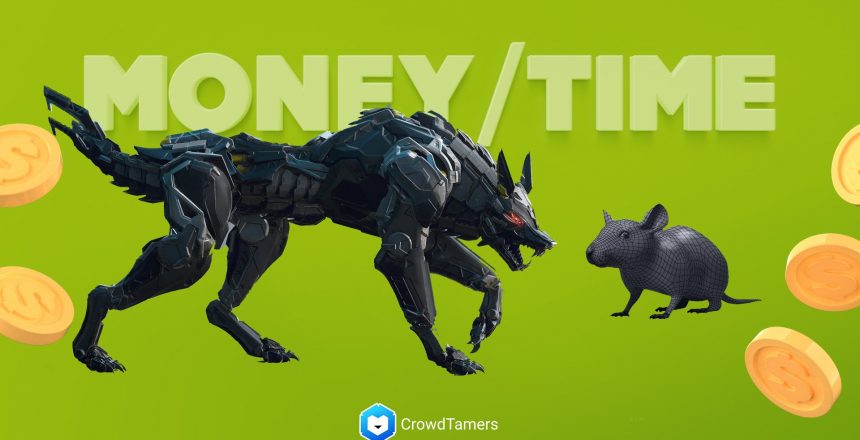The moment you launch a startup, there is a wolf at your door.
This wolf demands money: salary, server costs, legal fees, and subscriptions. It claws outside the door, snuffling and huffing and puffing.
Every successful startup, in the early days, is very very wary of that wolf.
A successful startup needs to balance their only two resources—time and money—and the wolf eats money with a gleeful howl. So startups try their hardest to get the most out of every penny they feed that wolf.
The other resource—time—is consumed quietly by a thousand small rats in the basement. There’s nothing loud and showy about how this vanishes, nibbled away in meetings and false starts, in projects half completed and deals left unfinished.

I work a lot with very early stage startups in the <$10k MRR range. The rat kills more of them than the wolf, because by the time that they realize that the rats and the wolf actually are eating the same thing, it’s too late for them. The saying is that time is money, and they spend too much time to save money.
The highest impact thing that an early stage startup can do is spend money to speed up learning.
I have seen dozens of startups get into accelerators and spend months struggling to get market fit with an idea because they are only getting 2 – 3 data points a week on what language and what message might be interesting to their audience.
These startups, regardless of the quality of their product, won’t get funded.
What worth do you attach to 4 weeks of your life. 4 months? What can do you do to shorten the time to learn? Spending a few hundred or thousand dollars can take you from 2 – 3 data points a week to 2,000 – 3,000 data points a week. The quality of the data may not be as high per individual data point, but the insights derived from so many new sources of data more than makes up for the lack of deep information.
Quantity can have a quality of its own. Two examples from recent clients can help explain:
Client A – Finding the core message
A first campaign for a client where we had no idea what their key messaging should be vs. one 6 weeks later:

Their first experiments 0.23% conversion rate on the click; a rule of thumb I use is that anything less than 1.5% is bad for “top of funnel” messaging. 0.23% showed that their whole core value proposition as they had constructed was attracting no one’s interest at all.
The second set of experiments, after a complete revision of product vision, how they communicated value, and their actual target user, performed at a 7.00% click rate–30x better! Their cost per click plummeted as well, changing their entire economic model.
Total spend was around $3,500 to learn:
- Who their audience was
- What messaging worked
- What visuals resonated
Where they had spent the previous 18 months debating the above questions. Quantitative data has guided faster action for future product decisions and helped turn around key commercials.
Client B – Finding a new target market
Another company had taken an expensive hardware item to market and was struggling to sell it at a profit margin that was sustainable. Working with them on a new business model they’d devised, in 6 weeks they’d 2x’ed their CTR for ads targeting a more focused persona with a very specialized need, and were testing prices 4x higher than previously
The original pricing & messaging tests

The new pricing & messaging test

Original pricing saw a conversion rate of about 2.7% on their ads, and was testing either a single flat fee purchase or a low monthly subscription cost. That’s not a terrible conversion rate, but it was definitely expensive and the conversion rates were poor to actual sales as well.
The new pricing and messaging test, on a new audience with a new value proposition. performed at a 5.04% click through, and even though the conversion funnel isn’t currently designed to allow for sales, one determined user actually converted to a sale from the click (instead of just providing an email), delivering a positive ROI to what was supposed to be a purely educational test.
Again, the total ad spend here was <$5k, and they were able to validate
- New product strategy
- Preliminary CTA
- New GTM strategy
- Key features & benefits for their new product launch
All in a bit over a month.
These startups saved scores of thousands of dollars in overhead, salary, and other costs at the expense of a few thousand dollars in ad spend. They haven’t forgotten the rats in the basement while going to market.
Your takeaway
Startups need to fail fast, and one of the best ways to fail is to understand what works and what doesn’t. The brutal honesty of disinterested strangers is worth 100 friend and family reviews of your new product.
Spend a few hundred (or, yes, thousand) dollars on testing and launching now and you may find that feeding the wolf now so you don’t have to feed the rats later is the best money your startup ever spent.



